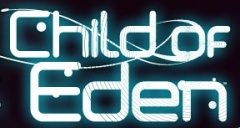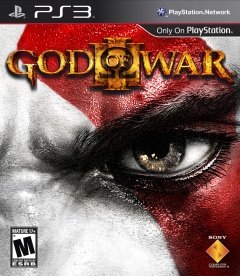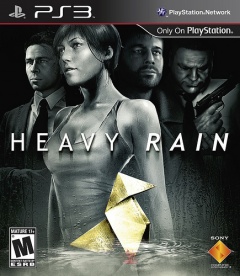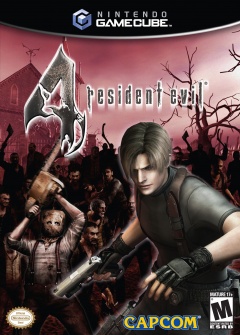ps3
Child of Eden Preview
 It should be little surprise for anyone
who knows me that my most exciting development from E3 was the unveiling of Child of
Eden. Kept hidden for two years in development, Tetsuya Mizuguchi, Q?
Entertainment and Ubisoft
(with a little help from Joel McHale) announced the title to the world to start off
the Ubi conference. Mizuguchi took the lead,
presenting a
demo level paired with the 360's Kinect motion capture
system.
While most detailed information on the title is still sparse and hard to find,
bits and pieces of information are beginning to sift around, most of which sound quite promising. Here is what we know so
far...
It should be little surprise for anyone
who knows me that my most exciting development from E3 was the unveiling of Child of
Eden. Kept hidden for two years in development, Tetsuya Mizuguchi, Q?
Entertainment and Ubisoft
(with a little help from Joel McHale) announced the title to the world to start off
the Ubi conference. Mizuguchi took the lead,
presenting a
demo level paired with the 360's Kinect motion capture
system.
While most detailed information on the title is still sparse and hard to find,
bits and pieces of information are beginning to sift around, most of which sound quite promising. Here is what we know so
far...
God of War III
 History lesson #1: the ancient Greeks were crazy. Sure, they essentially laid the foundation for western society, but they also worshipped more gods than anybody could possibly remember, all of whom led lives with more dramatic twists and turns than a daytime soap opera. I doubt Days of Our Lives ever featured a giant man made of rock who married his sister and ate his kids, after all.
History lesson #1: the ancient Greeks were crazy. Sure, they essentially laid the foundation for western society, but they also worshipped more gods than anybody could possibly remember, all of whom led lives with more dramatic twists and turns than a daytime soap opera. I doubt Days of Our Lives ever featured a giant man made of rock who married his sister and ate his kids, after all.
History lesson #2: in 2005, God of War tore its way into the still-beating hearts of PS2 owners with its brutal take on Greek mythology. The game introduced us to Kratos, Spartan servant of the gods and the kind of pitiless killer that most actual Spartans probably strived to be. God of War sold bajillions of copies, spawned equally-successful sequels on the PS2, PSP, and PS3, and even had its own terrible SpikeTV special for rabid fans to embarass themselves in front of the world. Not bad for fanfiction, is it?
History lesson #3: the action-packed start to God of War II is actually responsible for the creation of The First Hour. The game certainly started with a bang, thrusting the player into an intense situation right off the bat that dropped jaws to the floor. Does God of War III have the same inspirational power?
Metal Gear Solid 4: Guns of the Patriots
 Metal Gear Solid 4: Guns of the Patriots is the final chapter of the Metal Gear saga (kind of). It seeks to wrap up the complicated plots from the previous three games, which up to this point seem to be fairly divergent. It also seeks to perfect the gameplay and presentation for which Kojima-san and his Metal Gear Solid games have become famous.
Metal Gear Solid 4: Guns of the Patriots is the final chapter of the Metal Gear saga (kind of). It seeks to wrap up the complicated plots from the previous three games, which up to this point seem to be fairly divergent. It also seeks to perfect the gameplay and presentation for which Kojima-san and his Metal Gear Solid games have become famous.
It is also the first game in the series on the PlayStation 3, and it uses this hardware to be one of the best looking games ever. The MGS series has always used the in-game graphics engine to render its cutscenes to prevent a jarring disconnect between graphic styles, and this is the first time it works perfectly. The in-game character models look good enough that you can't complain a bit. The facial animations and lip-syncing is increbible. The game is, in a word, stunning.
So we know the game looks good, we can tell that from screenshots and trailers Is it good? Is it fun? Is it worth buying? For those of you with short attention spans, the answer is yes. For everyone else, read on.
The QTE cure: Singin' in the Heavy Rain
 Quick Time Events. Ever since God of War and Resident Evil 4 exploded
onto the scene with button-prompt sequences of gore and horror, the
industry has shown its sheep-like nature and incorporated these Gotcha!
moments into games without thinking about how they make an
interactive experience better. Many gamers have adjusted to the fact
that every cutscene now has an awful series of play buttons throughout, but I
personally would like to cram all the QTEs in the world into a space
shuttle full of cobras and launch them directly into the sun if it meant
I'd never have to see another one again.
Quick Time Events. Ever since God of War and Resident Evil 4 exploded
onto the scene with button-prompt sequences of gore and horror, the
industry has shown its sheep-like nature and incorporated these Gotcha!
moments into games without thinking about how they make an
interactive experience better. Many gamers have adjusted to the fact
that every cutscene now has an awful series of play buttons throughout, but I
personally would like to cram all the QTEs in the world into a space
shuttle full of cobras and launch them directly into the sun if it meant
I'd never have to see another one again.
That said, it's not impossible to come across decent use of QTEs.
Indeed, before Resident Evil 4 set the standard at the advent of 2005,
the mechanic was most prominently-used by the Dreamcast's crown jewel,
Shenmue. In fact, it was Yu Suzuki, that game's director, who coined the
term "Quick Time Event." Suzuki put the gimmick to good use throughout
Shenmue, allowing protagonist Ryo Hazuki to do everything from tossing
drunkards around in bar brawls to saving little girls from incoming
soccer balls. One of the reasons the game is so beloved today is that it
allowed the player to engage in such a wide variety of scenarios, many
of which were supported with smartly-designed QTEs.
Good QTEs didn't end with Shenmue, however, even though sometimes it seems that's the case. Like God of War, other Playstation heavyweights have managed to use QTEs to enhance a game experience. I think it's only fair that we look at a few of those, as well as some alternatives to these timed button-prompts for cinematic flair in games.
The QTE plague: What hath God of War wrought?
 Quick Time Events. So many games have used them to some extent in the
last five years that just about every gamer has an opinion on them.
Mine is that they are the worst gameplay gimmick to take the industry by
storm in a long time, and I wouldn't mind seeing them all packed into a
burlap sack filled with leeches and thrown into the depths of a
volcano. They're tacky, they're unintuitive, and their attempts to
engage players in cinematic animations backfire and break the sense of
immersion one has with a game. And unfortunately for me, they're just
about everywhere these days.
Quick Time Events. So many games have used them to some extent in the
last five years that just about every gamer has an opinion on them.
Mine is that they are the worst gameplay gimmick to take the industry by
storm in a long time, and I wouldn't mind seeing them all packed into a
burlap sack filled with leeches and thrown into the depths of a
volcano. They're tacky, they're unintuitive, and their attempts to
engage players in cinematic animations backfire and break the sense of
immersion one has with a game. And unfortunately for me, they're just
about everywhere these days.
Two behemoths let loose in early 2005 can be thanked -- or blamed -- for the salvo of games that have featured QTEs in the last five years. The first, with a January 11 release date, was Resident Evil 4. The game was extremely well-received: it won many Game of the Year awards, offered a fresh take on the aging Resident Evil formula, and gave Gamecube owners a third-party exclusive worth bragging about. The other member of the gruesome twosome that brought us into the era of QTEs is known as God of War. Released just two months after Resident Evil 4, the game received just as many accolades and turned heads back to the PS2 as quickly as they'd been lost to the Gamecube's horror hit. Is it any wonder that the industry went in the direction it did when two such monumental successes as these both prominently featured a relatively unused gameplay gimmick?
Today we'll take a look at how the smart use of QTEs helped put these two games on the map, and watch a few examples of QTEs gone wrong. And trust me, there was a huge pool of resources for the latter.
3D Dot Game Heroes
 Retro revivals are all the rage nowadays. In the era of the
low-budget downloadable games market, everybody's digging into their
past to give a
classic a fresh coat of paint or create a sequel with
old-school flare. The former provides a proven template onto which
shiny new graphics can be applied, while the latter guarantees interest
from lifelong fans who long to experience that same magic like it were
new again.
Retro revivals are all the rage nowadays. In the era of the
low-budget downloadable games market, everybody's digging into their
past to give a
classic a fresh coat of paint or create a sequel with
old-school flare. The former provides a proven template onto which
shiny new graphics can be applied, while the latter guarantees interest
from lifelong fans who long to experience that same magic like it were
new again.
3D Dot Game Heroes is a retro-styled installment in Nintendo's famed Legend of Zelda series, albeit one that was developed by a different company and published for a different company's hardware, and it would be slapped silly with copyright infringement lawsuits if the word "Zelda" appeared anywhere in it. From Software, known for its Armored Core series and the recent hit Demon's Souls, doesn't just take a page from Nintendo's book: the book gets Xeroxed from cover to cover. Almost everything in 3D Dot Game Heroes feels like it was stolen from The Legend of Zelda: A Link to the Past, from the plot to the controls to the stage designs to the items and everything in between.
We tend to view knockoffs as inferior, bitter, envious versions of the genuine article. Does 3D Dot Game Heroes lack the essence of its explosively-popular inspiration, or does it manage to work a little magic of its own?
Super Street Fighter IV Impressions
 As mentioned in my previous article,
Street Fighter 4 has become THE fighting game phenomenon of recent
years, and with good reason. Released to consoles early 2009 and
backed by a fantastic media campaign, Capcom gave fans a stunning,
well-balanced mix of old and new. Refreshing the memories of old
fans while simultaneously creating new ones, the fighting game was
resurrected.
As mentioned in my previous article,
Street Fighter 4 has become THE fighting game phenomenon of recent
years, and with good reason. Released to consoles early 2009 and
backed by a fantastic media campaign, Capcom gave fans a stunning,
well-balanced mix of old and new. Refreshing the memories of old
fans while simultaneously creating new ones, the fighting game was
resurrected.
Its update/sequel/expansion recently hit stores in April, offering new characters, new ultras, and a fantastic replay system along with improved online matchmaking and play. As I do not actually own a copy of the game, this article will only be my initial impressions on these topics. Currently released on 360 and PS3, an arcade version is planned for the near future, with a PC version yet unannounced and conspicuously absent.
Split/Second
 In all my years, I’ve never been much of a racing game fan. Quite
honestly, the idea of doing the same thing over and over feels tedious
to me. While some games, like Need for Speed Underground and Gran
Turismo have offered vehicle customization to try and keep things
fresh, they still seem to fall into a slump of painful repetition.
In all my years, I’ve never been much of a racing game fan. Quite
honestly, the idea of doing the same thing over and over feels tedious
to me. While some games, like Need for Speed Underground and Gran
Turismo have offered vehicle customization to try and keep things
fresh, they still seem to fall into a slump of painful repetition.
But
Black Rock Studios, the creators of Pure, have strived to come up to a
solution to this plague, and that is massive destruction and a game
premise unique from any other racing game I’ve ever laid my eyes on.
This solution is called Split/Second.
The premise of the game is
that you’re a stunt driver in a reality television series called
Split/Second, that has these stunt drivers racing against each other in
cities manufactured by the television show. While stunts, in
themselves, are not entirely new, the massive chaos is extremely
refreshing.
We’ve all played Mario Kart, and we’ve shot koopa
shells at our enemies and laughed as they were rendered motionless
while we passed them into first place, and it’s relatively satisfying
to a point, but this is different.
But where Mario Kart is set
to stun, Split/Second is set to kill. From gas station explosions and
helicopters dropping explosive barrels to air planes crashing on the
raceway, this game delivers a completely original adrenaline rush that
delivers over and over again.
You’re in control of these beautiful disasters with power plays, which are your weapons in this dog-eat-dog racing world. The way to activate them is to accumulate energy. You can accomplish this by drifting around corners, drafting behind your opponents, and jumping with your vehicle. You also receive a bonus amount of energy by passing opponents while drifting, jumping past opponents and dodging power plays set off in your path.
Iron Man 2
 Sequels. Comic franchises converted to video games. Movie tie-ins.
Studios closing their doors. Needless to say, there are a lot of
barriers that can narrow the odds of producing a high quality title. It
would seem that Iron Man 2 was forced to hurdle all of them. As I
mentioned in my recent First Hour review of Iron Man 2, its predecessor
was critically panned. But did it deserve it? Or did it fall prey to
the echo chamber of hate that often befalls licensed products and spin
offs? The truth is, Iron Man had it’s problems. From unwieldy controls
to frame rate issues, it seemed like it stumbled each time it would
just get up to speed. But it had moments of fun, high intensity super
hero action that carried one through to each subsequent mission. Going
into a sequel, one assumes that Sega Studios San Francisco, the
developer behind both titles would make an effort to improve the
failings of the original while trying to maintain those things they got
right the first time. The question is, did they pull it off?
Sequels. Comic franchises converted to video games. Movie tie-ins.
Studios closing their doors. Needless to say, there are a lot of
barriers that can narrow the odds of producing a high quality title. It
would seem that Iron Man 2 was forced to hurdle all of them. As I
mentioned in my recent First Hour review of Iron Man 2, its predecessor
was critically panned. But did it deserve it? Or did it fall prey to
the echo chamber of hate that often befalls licensed products and spin
offs? The truth is, Iron Man had it’s problems. From unwieldy controls
to frame rate issues, it seemed like it stumbled each time it would
just get up to speed. But it had moments of fun, high intensity super
hero action that carried one through to each subsequent mission. Going
into a sequel, one assumes that Sega Studios San Francisco, the
developer behind both titles would make an effort to improve the
failings of the original while trying to maintain those things they got
right the first time. The question is, did they pull it off?
After sitting in on the developer conference call for Iron Man 2, I was
hopeful that things were looking good. They talked about a dedication
to listening to fans, and to implementing those lessons they learned
from user feedback on the first game. They talked about simplified
controls, vast levels, destructible environments and deep
customization. They touted a boss that is “bigger than any boss in any
game ever”. And War Machine. War Machine sounded like a perfect
addition to the Iron Man gaming universe. Yes, it sounded like it had
really come together. And so I eagerly anticipated my review copy,
thinking back to the flawed but fun experience I had with the first
game.
A half hour of Heavy Rain
 I recently had the chance to sit down and play some Heavy Rain while my brother-in-law (who had already beaten the game) provided some running commentary. Heavy Rain is one of a handful of games on the PlayStation 3 that makes me jealous of those who own one. In 2007, I played the first hour of Indigo Prophecy (the fourth first hour review ever!), also be developer Quantic Dream. I really enjoyed it and went on to beat the game within a few days. While the game had plenty of flaws, I thought it was still a fun experience that brought me on a slightly hilly ride of emotions (that basement level in the precinct was so creepy!).
I recently had the chance to sit down and play some Heavy Rain while my brother-in-law (who had already beaten the game) provided some running commentary. Heavy Rain is one of a handful of games on the PlayStation 3 that makes me jealous of those who own one. In 2007, I played the first hour of Indigo Prophecy (the fourth first hour review ever!), also be developer Quantic Dream. I really enjoyed it and went on to beat the game within a few days. While the game had plenty of flaws, I thought it was still a fun experience that brought me on a slightly hilly ride of emotions (that basement level in the precinct was so creepy!).
Without knowing anything about Heavy Rain I wanted to play it. I guess that's the most any developer could ask for, Heavy Rain isn't a sequel to Indigo Prophecy (commonly known as Fahrenheit outside the U.S.), it's not even on the same set of consoles, but I still counted down the weeks until it would arrive.
Heavy Rain's arrival came and went though and it wasn't until last weekend that I finally sat down and played it. I wish I could have set aside a solid hour along with a notepad or voice recorder to do a proper first hour review, but alas, sometimes you just take an opportunity when given it.
